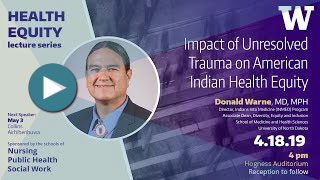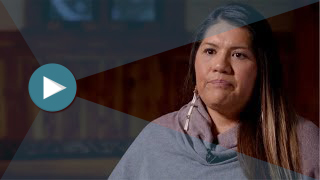Historical Trauma
The term historical trauma describes the way that massive, population-level traumatic events affect multiple generations. Indian people who directly faced violence, as well as cultural and family destruction, experienced powerful negative health effects. Emerging research shows that these events can have a lasting genetic, physical, and psychological impact on their children and grandchildren as well.
In order for an event to be considered a historical trauma, it generally has three major components: 13
- It is a large-scale trauma that is experienced by a group of people.
- The group shares an identity or affiliation, even if it is just living in the same area.
- The trauma affects the physical and mental health of multiple generations.
| Physical | Mental and Behavioral | |
|---|---|---|
| Original Generation |
|
|
| Subsequent Generations | Increased likelihood of
|
Increased likelihood of
|
How does historical trauma work? On an individual level, parents’ negative experiences might lead to trouble forming healthy attachments with their children or unhealthy behaviors that negatively affect their children. Within communities, stories and memories get passed down from generation to generation reinforcing the fear and trauma experienced by parents and ancestors. The event may cause the destruction of protective factors, like tribal languages, cultures, spirituality, and health practices. This in turn contributes to the trauma through loss of identity, community, and feelings of isolation 14, 15. In this way, a historical traumatic event, such as war or mass displacement, continues to have powerful negative health effects on the children and grandchildren of those who originally experienced the trauma.
“A program, organization, or system that is trauma-informed realizes the widespread impact of trauma and understands potential paths for recovery; recognizes the signs and symptoms of trauma in clients, families, staff, and others involved with the system; and responds by fully integrating knowledge about trauma into policies, procedures, and practices, and seeks to actively resist re-traumatization.”—SAMHSA’s Concept of Trauma and Guidance for a Trauma-Informed Approach
Cultural Resilience
Many Indian communities have developed strategies to cope with historical trauma and promote cultural resilience, such as:
- Increased family and tribal cohesiveness
- Redefined sense of purpose and meaning
- Increased charitable giving and volunteerism
When working with tribal communities, you can assist these strategies by being aware of adverse childhood experiences (ACES) and supporting trauma-informed approaches.
Additional Resources
For more information on historical trauma and ACES, visit the following resources:
- Historical trauma and cultural healing, University of Minnesota Extension
- Historical Trauma and Microaggressions: A Framework for Culturally-Based Practice
- The Historical Trauma Response Among Natives and Its Relationship with Substance Abuse: A Lakota Illustration
- A list of resources compiled by the University of Minnesota Extension on historical trauma, including the mechanisms through which trauma affects the health of multiple generations.
- Literature review of studies on intergenerational trauma and epigenetics
- Adverse Childhood Experiences (ACES)
For more information on resilience, see:
- Rethinking Resilience From Indigenous Perspectives
- Traditional Native Culture and Resilience
- Native American Resilience
- Seeing the Protective Rainbow: How Families Survive and Thrive in the American Indian and Alaska Native Community
- Guidance from Alaska Native & Native American gathering on trauma & resilience in Alaska

